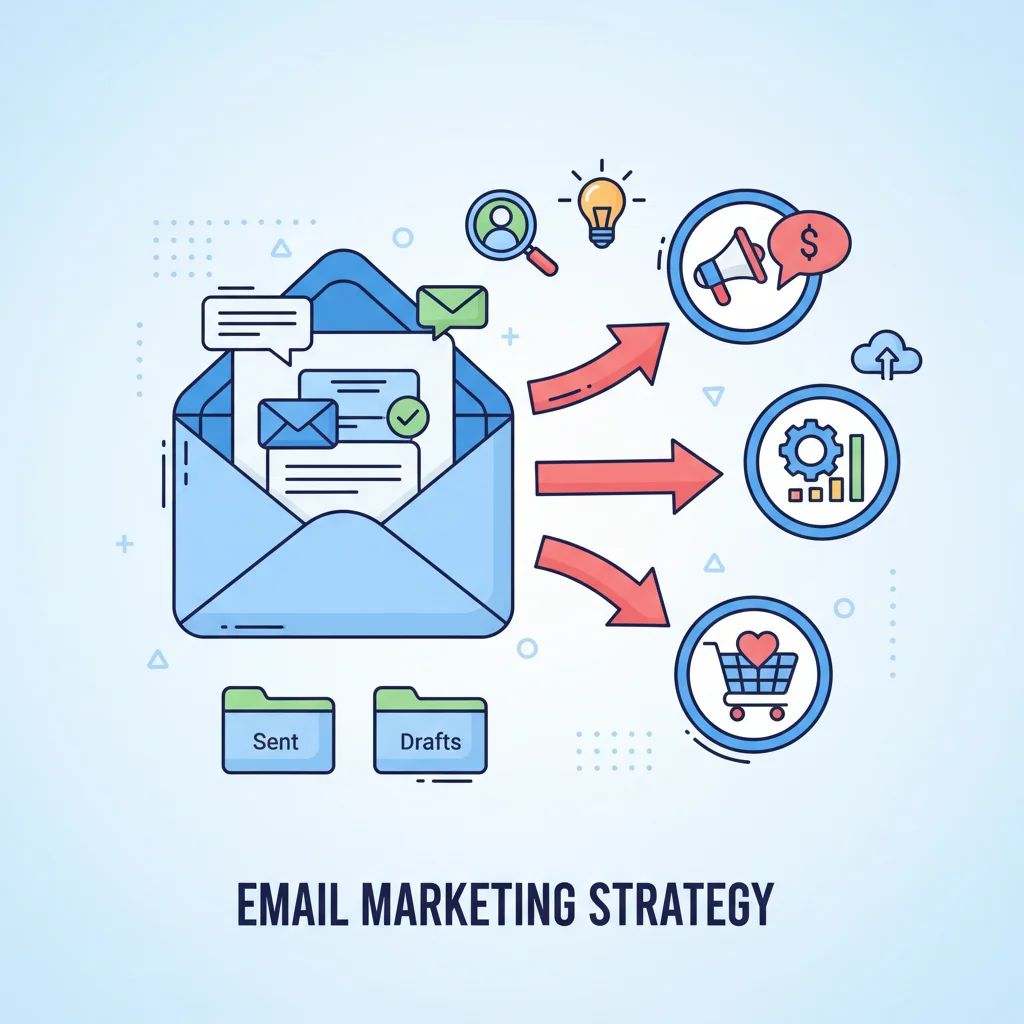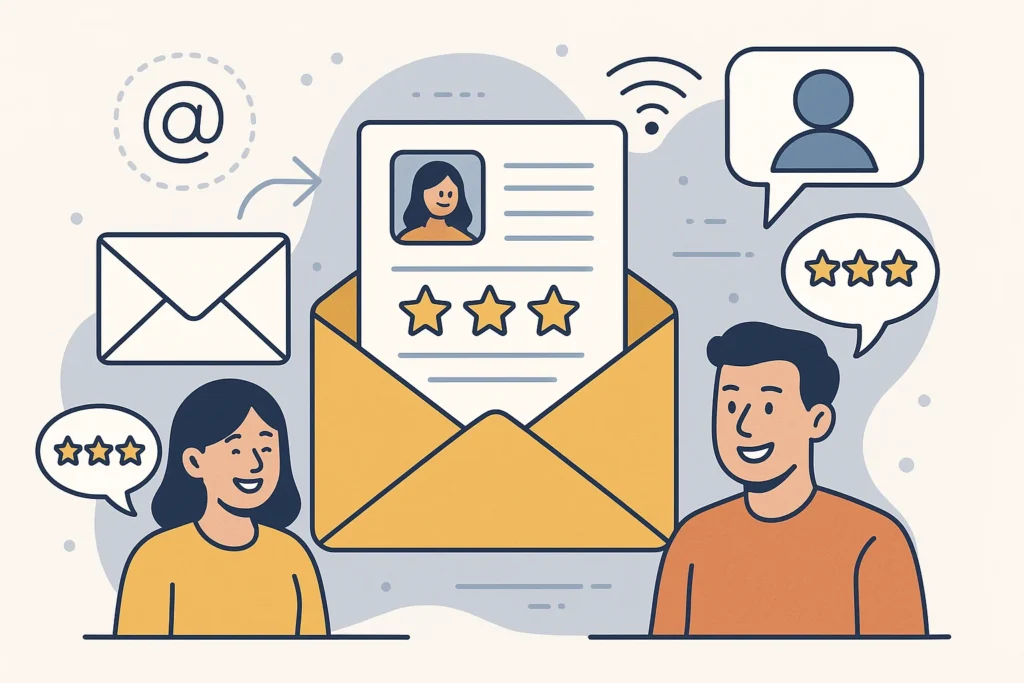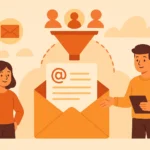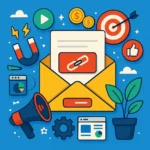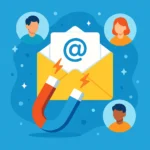Now Reading: How to Create Effective Email Drip Campaign Sequences
-
01
How to Create Effective Email Drip Campaign Sequences
How to Create Effective Email Drip Campaign Sequences

Drip email campaigns generate 80% higher open rates and 3x more click-throughs than single-send emails. Yet 70% of businesses aren’t using them effectively – or at all. This massive disconnect represents both a problem and an opportunity. When you create effective email drip campaigns, you tap into automated sequences that nurture relationships while you sleep. Let me show you how the pros do it.
Key Takeaways
How to create an effective email drip campaign:
- Define clear campaign goals and identify specific audience segments before writing a single email
- Map your customer journey to determine optimal timing and content for each message in your sequence
- Craft compelling, personalized content with attention-grabbing subject lines and clear calls-to-action
- Set up automation triggers based on specific user behaviors or time intervals
- Test different elements and continuously optimize based on performance metrics
What Is An Email Drip Campaign?
Before diving into the how-to, let’s get crystal clear on what we’re talking about. An email drip campaign is a series of pre-written, automated emails sent to subscribers based on specific triggers or timing. Unlike one-off email blasts, drip campaigns deliver the right message at the right time, nurturing relationships with your audience through consistent, relevant communication.
Think of it as setting up a conversation that happens automatically. When someone takes a specific action (signs up, abandons a cart, downloads a resource), your drip campaign kicks in, sending them precisely the information they need at that moment – and then following up strategically.
Why drip campaigns outperform regular emails
The numbers don’t lie: drip campaigns generate 80% higher open rates and 3x more click-throughs than single emails. Why? Because they’re:
- Timely: Triggered by specific actions or scheduled at strategic intervals
- Relevant: Targeted to specific segments based on behavior or preferences
- Progressive: Each message builds on the previous one, moving prospects through your funnel
When you create effective email drip campaigns, you’re essentially automating the nurturing process that would be impossible to do manually at scale.
Define Your Campaign Goals
Every successful drip campaign starts with crystal-clear objectives. Without knowing what you’re trying to accomplish, you’ll end up with a disjointed series of emails that confuse subscribers rather than convert them.
Ask yourself: What specific action do I want recipients to take after going through this sequence?
Common goals for drip campaigns include:
- Lead nurturing: Educating prospects and building trust
- Onboarding: Helping new users get value from your product
- Abandoned cart recovery: Bringing shoppers back to complete purchases
- Re-engagement: Winning back inactive subscribers
- Post-purchase: Encouraging reviews, upsells, or referrals
For example, if you’re creating a welcome sequence, your goal might be to introduce new subscribers to your brand and get them to make their first purchase. For an onboarding sequence, success might mean getting users to complete key actions in your software.
Be specific with your goals. Instead of “increase sales,” aim for “convert 5% of free trial users to paid plans” or “recover 15% of abandoned carts.”
Useful Articles:
Segment Your Audience
One-size-fits-all messaging is the enemy of conversion. To create effective email drip campaigns, you need to segment your audience into groups with similar characteristics, behaviors, or needs.
Effective segmentation strategies:
Behavioral segmentation: Based on actions taken (or not taken)
- Website pages visited
- Products viewed
- Downloads or sign-ups
- Purchase history
Demographic segmentation: Based on who they are
- Age, gender, location
- Job title or industry
- Company size
Engagement-based segmentation: Based on how they interact with you
- Email open rates
- Click-through patterns
- Frequency of engagement
For example, Sephora sends different drip campaigns to active shoppers versus dormant users, personalizing content based on past purchase behavior. This targeted approach makes each message feel personally relevant rather than generic.
The more specific your segments, the more personalized and effective your drip campaigns will be. Just don’t go overboard – start with 3-5 key segments and expand as you get more sophisticated.
Map Your Customer Journey
Before writing a single email, map out the typical journey your customers take from awareness to purchase and beyond. This helps you identify the critical touchpoints where your drip campaign can provide the most value.
Steps to map your customer journey:
- Identify key stages: Awareness, consideration, decision, retention
- List questions/concerns at each stage
- Determine triggers that move people between stages
- Plan content that addresses needs at each point
For example, a SaaS company’s onboarding drip campaign might look like:
- Email 1: Welcome + quick win (Day 0)
- Email 2: Core feature tutorial (Day 2)
- Email 3: Success stories from similar users (Day 5)
- Email 4: Advanced features introduction (Day 8)
- Email 5: Special offer before trial ends (Day 12)
Each email moves the user closer to becoming a paying customer by addressing specific needs at the right moment.
Plan Your Email Sequence
With your goals, segments, and customer journey mapped out, it’s time to plan the actual sequence of emails. This is where you decide how many emails to send, when to send them, and what each should contain.
Elements to consider:
- Number of emails: Most effective drip campaigns contain 4-11 emails, though this varies by goal and audience
- Timing and frequency: How much time between messages? (Hours, days, weeks?)
- Triggers: What actions or inactions will prompt each email?
- Content progression: How will each email build on previous messages?
For example, an abandoned cart sequence might include:
- Email 1: Reminder with product image (1 hour after abandonment)
- Email 2: Social proof + reviews (24 hours later)
- Email 3: Address common objections (3 days later)
- Email 4: Limited-time discount (5 days later)
The key is to space your emails appropriately – frequent enough to maintain engagement but not so frequent that you become annoying. For welcome sequences, emails can be closer together; for nurturing campaigns, you might space them further apart.
Useful Articles:
Craft Compelling Email Content
Now for the fun part: writing emails that actually get opened, read, and clicked. The best drip campaign in the world won’t work if the content falls flat.
Subject lines that get opens
Your subject line is the gatekeeper to your email content. Make it count:
- Create curiosity: “The unusual way our customers are saving 40%”
- Add urgency: “Last chance: Your trial ends tomorrow”
- Be specific: “3 quick tips to improve your landing page today”
- Keep it short: 41-50 characters is the sweet spot
Email body best practices
- Start with a hook: Grab attention in the first sentence
- Make it skimmable: Short paragraphs, bullets, subheadings
- Focus on benefits: What’s in it for the reader?
- Include one clear CTA: What exact action should they take?
- Personalize: Use name, reference past behavior or preferences
Example: Welcome email template
Subject: Welcome to [Brand] – Here’s your first step
Hi [Name],
Thanks for joining the [Brand] community! I’m excited to have you here.
I know you signed up because you want to [achieve specific goal]. That’s exactly what we help people like you do every day.
Your first step is simple:
[Clear, specific action they should take]
Just click the button below to get started:
[BUTTON: Take First Step]
If you have any questions, just hit reply. I read every email personally.
Talk soon,
[Your Name]
Remember to keep your main message above the fold and make your emails easy to skim. Most people don’t read every word – they scan for interesting bits.
Set Up Your Automation
The “drip” in drip campaigns comes from automation. Setting up the right triggers and workflows ensures your emails go out at precisely the right time without manual intervention.
Common trigger types:
Action-based triggers: Sent when someone takes a specific action
- Signing up for your list
- Downloading content
- Abandoning a cart
- Clicking a specific link
Time-based triggers: Sent after a specific time interval
- Days since signup
- Time since last purchase
- Birthday or anniversary
Inaction triggers: Sent when someone doesn’t take an expected action
- Didn’t open previous email
- Didn’t complete onboarding
- Hasn’t purchased in X days
Most email marketing platforms (like Mailchimp, ActiveCampaign, or ConvertKit) make setting up these automations relatively straightforward with visual builders or simple if/then rules.
For example, in an onboarding sequence, you might set up a rule that says: “If user completes setup task, send congratulatory email. If not completed within 3 days, send reminder email.”
Personalize Your Messages
Personalization goes way beyond just using someone’s first name. When you create effective email drip campaigns, you leverage data to make each message feel like it was written specifically for the recipient.
Personalization strategies:
Basic personalization:
- First name in subject line and greeting
- Company name or location references
Behavioral personalization:
- Products viewed or purchased
- Content downloaded or consumed
- Pages visited on your website
Contextual personalization:
- Time of day or local weather
- Device they’re using
- Stage in customer journey
For example, Amazon’s product recommendation emails are highly personalized based on browsing and purchase history. They don’t just say “check out these products” – they say “based on your interest in [specific product], you might like these.”
The more personalized your emails, the higher your engagement rates will be. Just make sure you’re collecting the right data to enable this personalization.
Useful Articles:
Design Mobile-Friendly Templates
Over 60% of email opens now happen on mobile devices. If your drip campaigns aren’t optimized for small screens, you’re potentially losing more than half your audience.
Mobile optimization tips:
- Use responsive templates that adapt to screen size
- Keep subject lines under 40 characters (they get cut off on mobile)
- Use larger font sizes (minimum 14px for body text)
- Make CTAs thumb-friendly (at least 44×44 pixels)
- Minimize images to improve load times
- Preview on multiple devices before sending
A single-column layout generally works best for mobile, with plenty of white space to make text readable and links tappable.
Remember that mobile users are often checking email on the go, so get to the point quickly and make your main message clear even if they’re just skimming.
Write Strong Calls to Action
Every email in your drip campaign should have a clear purpose, and that purpose should be reflected in a strong call to action (CTA). Without a compelling CTA, subscribers might read your email and then… do nothing.
CTA best practices:
- Use action verbs: “Get started,” “Claim your discount,” “Watch the demo”
- Create urgency: “Shop the sale before it ends,” “Limited spots available”
- Make it specific: “Download your free template” is better than “Learn more”
- Reduce friction: Address objections directly in or near the CTA
- Use contrasting colors to make buttons stand out
- Limit to one primary CTA per email (with perhaps one secondary option)
For example, instead of a generic “Click here” button, Trello might use “Start organizing your projects” as their CTA – it’s specific, action-oriented, and focused on the benefit to the user.
Place your CTA where it makes the most sense – sometimes that’s after you’ve built up to it with compelling copy, and other times it’s right at the top when the action is simple and obvious.
Best Practices for Email Drip Campaigns
To wrap things up, here are some proven best practices to keep in mind as you create effective email drip campaigns:
Timing and frequency
- Space emails appropriately: Find the balance between staying top-of-mind and becoming annoying
- Consider time zones: Schedule sends based on recipient’s local time when possible
- Be consistent: Set expectations about how often you’ll email (and stick to it)
Content quality
- Focus on value: Each email should provide something useful, interesting, or beneficial
- Maintain brand voice: Keep tone and style consistent across all emails
- Use storytelling: Narratives are more engaging than straight pitches
- Include social proof: Testimonials, reviews, and case studies build credibility
Technical considerations
- Ensure deliverability: Use authentication protocols (SPF, DKIM, DMARC)
- Clean your list regularly: Remove bounces and chronic non-openers
- Include unsubscribe options: Make it easy to opt out (it’s the law anyway)
- Test across devices and email clients: Ensure everything displays correctly
Continuous improvement
- Monitor key metrics: Open rates, click rates, conversion rates, unsubscribes
- Analyze drop-off points: Where are people leaving your sequence?
- Update content regularly: Keep information fresh and relevant
- Document what works: Build a swipe file of your most effective emails
By following these best practices and continuously refining your approach, you’ll create email drip campaigns that engage subscribers, nurture relationships, and drive meaningful business results.
Creating effective email drip campaigns takes time and effort upfront, but the automation pays dividends for months or years to come. Start small with one well-crafted sequence, measure the results, and expand from there. Before you know it, you’ll have a powerful system of automated emails working around the clock to nurture leads and drive conversions while you focus on other aspects of your business.


